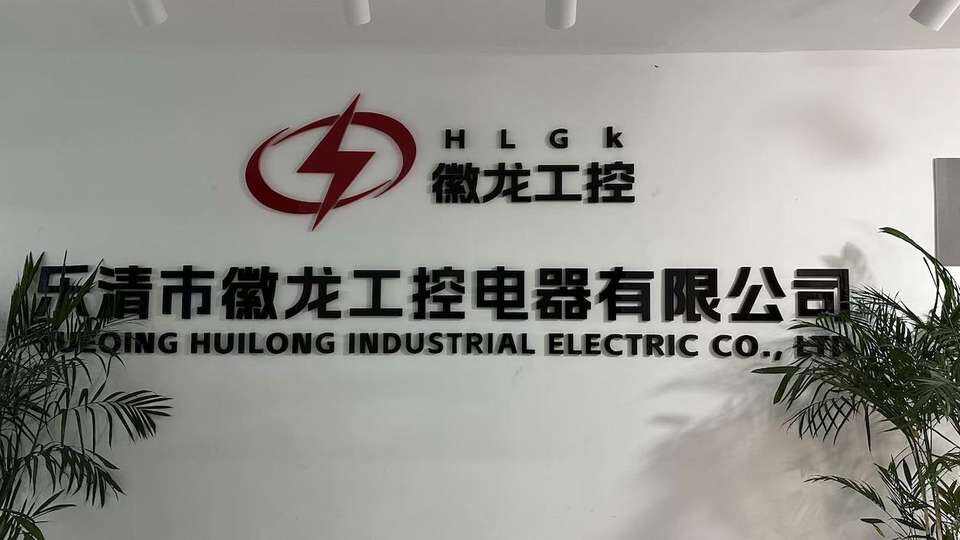Understanding Travel Limit Switch Solutions for Small Businesses
What Are Travel Limit Switches?
Travel limit switches are essential components in machinery that play a critical role in controlling movement and ensuring safety. A travel limit switch is a mechanical device that detects the presence of an object or monitors its position and movement. Using electrical components, these switches halt machinery when a specific travel limit is reached, thereby preventing over-travel and potential damage. Their functionality relies on micro limit switches that activate circuits as the associated lever or roller is actuated by a machine component.
Travel limit switches find applications across various industries, from manufacturing to transportation. In small businesses, they are particularly beneficial in reducing machinery downtime and enhancing safety protocols. For example, in small-scale manufacturing plants, limit switches safeguard both workers and equipment by automatically stopping machines when they reach a designated point, thereby optimizing productivity and minimizing costs.
Why Small Businesses Need Cost-Effective Solutions
Small businesses often face significant financial pressures, making cost-effective solutions crucial for operational sustainability. Reliable and affordable machinery components, like travel limit switch solutions, play a vital role in this aspect. By reducing operational costs, these switches help small businesses maintain machinery efficiency without overexerting their budget. A reliable component leads to less frequent repairs and maintenance, which translates to savings in both time and money.
Travel limit switch solutions not only enhance productivity but also help in adhering to budgetary constraints. By investing in durable and efficient switches, small businesses can ensure smooth machine operations, leading to consistent production levels. Therefore, selecting quality travel limit switch solutions allows small businesses to thrive in competitive markets without compromising on performance or financial health.
Types of Travel Limit Switches for Industrial Applications
Micro Limit Switches: Compact & Precision-Driven
Micro limit switches, often referred to as limit switch microswitches, are essential for applications where space constraints are a primary concern. These switches are known for their compact size and ability to provide precise operation. They are commonly used in small, confined spaces such as automation systems and electronic devices, demonstrating their adaptability and versatility. The key advantage of using micro limit switches lies in their accuracy and reliability, making them indispensable in ensuring efficient performance and safety in various industrial applications. Whether used in robotics or consumer electronics, these switches play a crucial role in achieving precise control.
Roller Limit Switches: Durable Motion Control
Roller limit switches are lauded for their robust construction, designed to withstand rigorous industrial conditions. These switches are crucial for controlling motion in heavy-duty machinery and manufacturing equipment. Their durability makes them ideal for environments requiring consistent performance under pressure and high-load applications. For small businesses, particularly in industries such as manufacturing and logistics, roller limit switches offer a reliable solution to automate and streamline operations, improving efficiency and reducing maintenance-related downtime. The design of roller limit switches ensures they can handle repeated use without compromising functionality, thus offering long-term cost-effectiveness.
Waterproof Limit Switches: Ideal for Harsh Environments
Waterproof limit switches are designed with protective features that make them suitable for harsh environments. These switches prevent water ingress, making them ideal for agricultural applications, outdoor installations, and even food processing environments where moisture could be prevalent. They play a critical role in maintaining the continuous operation and safety of machinery by enduring challenging conditions without succumbing to damage. The durability of waterproof limit switches helps preserve the functionality of equipment, providing small businesses with a reliable and resilient solution that supports uninterrupted operations.
These varied types of travel limit switches cater to diverse industrial needs, offering solutions that align with the specific requirements of small businesses across different sectors.
Key Features of Affordable Travel Limit Switch Solutions
Durability and Material Quality
When choosing travel limit switches, durability and material quality are crucial for ensuring long-term performance and reliability. High-quality materials, such as robust metals and resilient plastics, enhance the switch's longevity by resisting wear and tear from repeated usage and harsh operating conditions. Investing in durable solutions leads to long-term cost savings, as frequent replacements and repairs are minimized. For instance, companies that have opted for high-quality switches often report enhanced product longevity and consistent performance, highlighting the value of such an investment.
Energy Efficiency for Long-Term Savings
Energy efficiency in travel limit switch solutions is a significant factor that helps small businesses reduce power consumption and operational costs over time. These efficient switches minimize energy usage without compromising performance, leading to substantial savings on energy bills. Conducting a cost-benefit analysis reveals that investing in energy-efficient solutions pays off, as long-term savings outweigh initial costs. Embracing energy efficiency also aligns with sustainability initiatives, allowing businesses to operate responsibly while reaping financial benefits. This not only contributes to environmental conservation but also reinforces the business's commitment to sustainable practices.
Compatibility with Existing Machinery
The compatibility of travel limit switch solutions with existing machinery is essential for seamless integration and operation. Ensuring that new switches work well with current systems avoids unnecessary modifications and the associated costs. Small businesses may face obstacles in this integration process, such as outdated equipment or incompatible interfaces. To ensure smooth integration, it is crucial to assess the switch's technical specifications and consult with manufacturers about customization options. Planning and testing the integration process can mitigate potential issues, ensuring that the switches enhance operational effectiveness without costly disruptions.
Cost-Saving Strategies for Implementing Travel Limit Switches
Bulk Purchasing & Supplier Negotiations
One of the most effective cost-saving strategies for small businesses when implementing travel limit switches is bulk purchasing. Buying in large quantities can yield substantial discounts, significantly lowering the unit cost of each switch. Many suppliers are willing to offer these discounts to secure large orders, which is advantageous for both parties. Additionally, effective supplier negotiations can further optimize costs. Businesses should come prepared with detailed information about their purchase history, projected needs, and the volume of products they plan to buy. This transparency can lead to better pricing agreements and potentially even favorable payment terms. There are numerous instances where businesses have saved 10% to 20% on their total costs through these practices, highlighting the importance of strategic purchases and supplier partnerships.
Preventative Maintenance to Reduce Downtime
Preventative maintenance plays a crucial role in ensuring the longevity and efficiency of travel limit switches. Regular inspections and maintenance routines can significantly enhance the lifespan of these components, reducing the likelihood of unexpected malfunctions that can lead to costly downtime. Studies have shown that businesses employing consistent maintenance schedules experience up to 40% less downtime compared to those without structured routines. Implementing a routine check system—as simple as monthly visual inspections and bi-annual detailed servicing—can go a long way in preserving the operational efficiency of these switches. Not only does this approach reduce interruption-related costs, but it also contributes to overall system sustainability.
DIY Installation vs. Professional Services
When it comes to installing travel limit switches, businesses often face the dilemma of choosing between DIY installation and professional services. DIY installation can be cost-effective, especially for small scale projects where basic technical expertise suffices. However, this route comes with the risk of improper setup, which can lead to operational inefficiencies or damage. On the other hand, hiring professionals guarantees a precision installation that ensures all components function correctly together. While professional services may involve higher upfront costs, they can prevent expensive repairs and adjustments in the future. A cost analysis often reveals that while DIY may save immediate expenses, professional installation can be more economical over time, particularly for larger or more complex systems. Businesses must weigh their expertise, budget, and the complexity of the installation to make the most informed decision.
Case Studies: Small Businesses Leveraging Travel Limit Switches
Manufacturing Efficiency with Micro Limit Switches
In the competitive world of small-scale manufacturing, deploying micro limit switches has notably improved operational efficiency. Consider a small assembly line business, which integrated micro limit switches to automate and streamline the process of detecting machinery position. This change led to a measurable increase in production output and reduced human error. According to the plant manager of this facility, "The precision and reliability of these switches transformed our manufacturing flow." Metrics from this case study revealed a 20% improvement in production speed and a significant reduction in equipment downtime due to precise machinery alignment. This example illustrates the potential enhancements in manufacturing efficiency that micro limit switches can offer to small businesses aiming to optimize their production lines.
Automation Success in Warehouse Roller Switch Applications
Implementing roller limit switches in warehouse operations has led to a remarkable success story in automation. A modest-sized warehouse, facing challenges in inventory handling efficiency, adopted roller limit switches to automate conveyor systems and streamline the movement of goods. As a result, the warehouse reported a 25% increase in process timing and a 30% reduction in manual labor costs. These improvements in workflow efficiency were achieved by enabling consistent, reliable control over the conveyor systems. The facility manager noted, "Automation with roller limit switches has not only enhanced our operational efficiency but also positioned us competitively in a demanding market." These outcomes can serve as a blueprint for other businesses aiming to jump on the automation bandwagon to realize similar successes.
FAQ Section
What is the primary function of a travel limit switch?
The main function of a travel limit switch is to control machinery movement by detecting the presence or position of an object and halting operation when a specific travel limit is reached, thus preventing over-travel and potential damage.
Why are travel limit switches essential for small businesses?
Travel limit switches are crucial for small businesses as they help reduce machinery downtime, enhance safety protocols, improve productivity, and cut operational costs, all of which are vital for maintaining financial stability and competitiveness.
What are the different types of travel limit switches?
The different types include micro limit switches, roller limit switches, and waterproof limit switches, each serving specific industrial needs based on size constraints, robust construction, and protective features, respectively.
How can small businesses save costs when implementing limit switch solutions?
Small businesses can save costs through bulk purchasing and supplier negotiations, consistent preventative maintenance to reduce downtime, and, depending on the project scale and complexity, by weighing DIY installation against professional services.
Table of Contents
-
Understanding Travel Limit Switch Solutions for Small Businesses
- What Are Travel Limit Switches?
- Why Small Businesses Need Cost-Effective Solutions
- Types of Travel Limit Switches for Industrial Applications
- Micro Limit Switches: Compact & Precision-Driven
- Roller Limit Switches: Durable Motion Control
- Waterproof Limit Switches: Ideal for Harsh Environments
- Key Features of Affordable Travel Limit Switch Solutions
- Durability and Material Quality
- Energy Efficiency for Long-Term Savings
- Compatibility with Existing Machinery
- Cost-Saving Strategies for Implementing Travel Limit Switches
- Bulk Purchasing & Supplier Negotiations
- Preventative Maintenance to Reduce Downtime
- DIY Installation vs. Professional Services
- Case Studies: Small Businesses Leveraging Travel Limit Switches
- Manufacturing Efficiency with Micro Limit Switches
- Automation Success in Warehouse Roller Switch Applications
- FAQ Section
- What is the primary function of a travel limit switch?
- Why are travel limit switches essential for small businesses?
- What are the different types of travel limit switches?
- How can small businesses save costs when implementing limit switch solutions?







